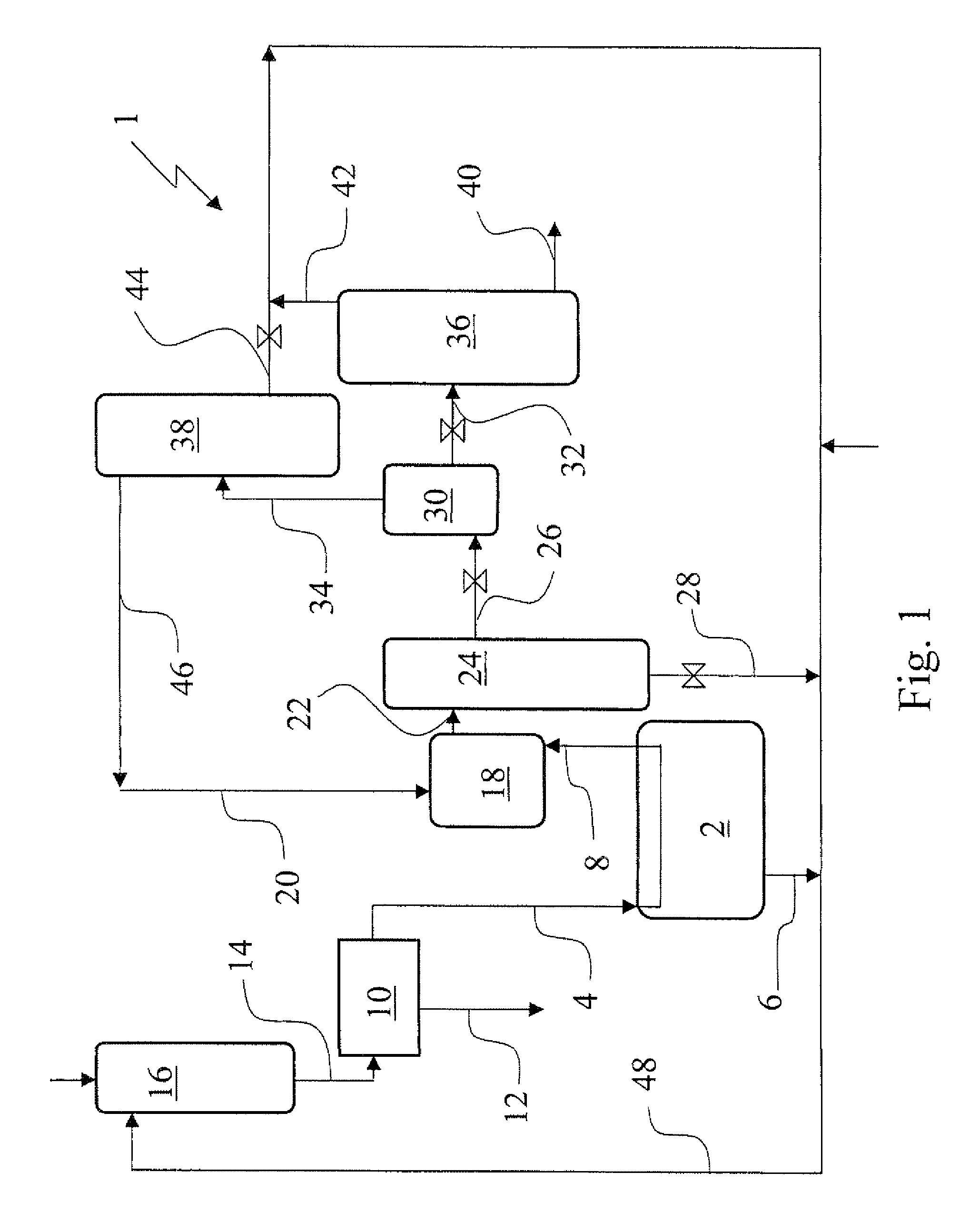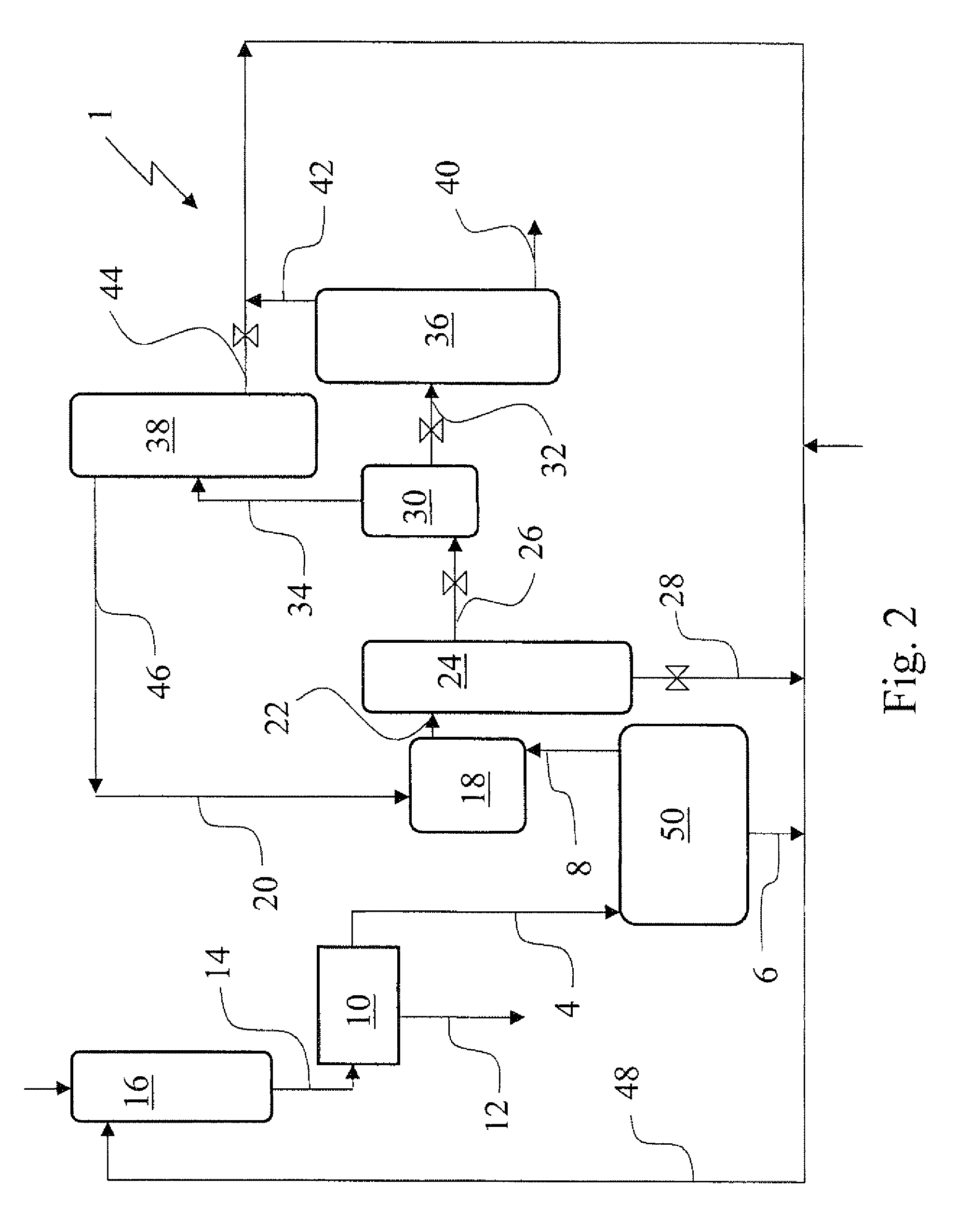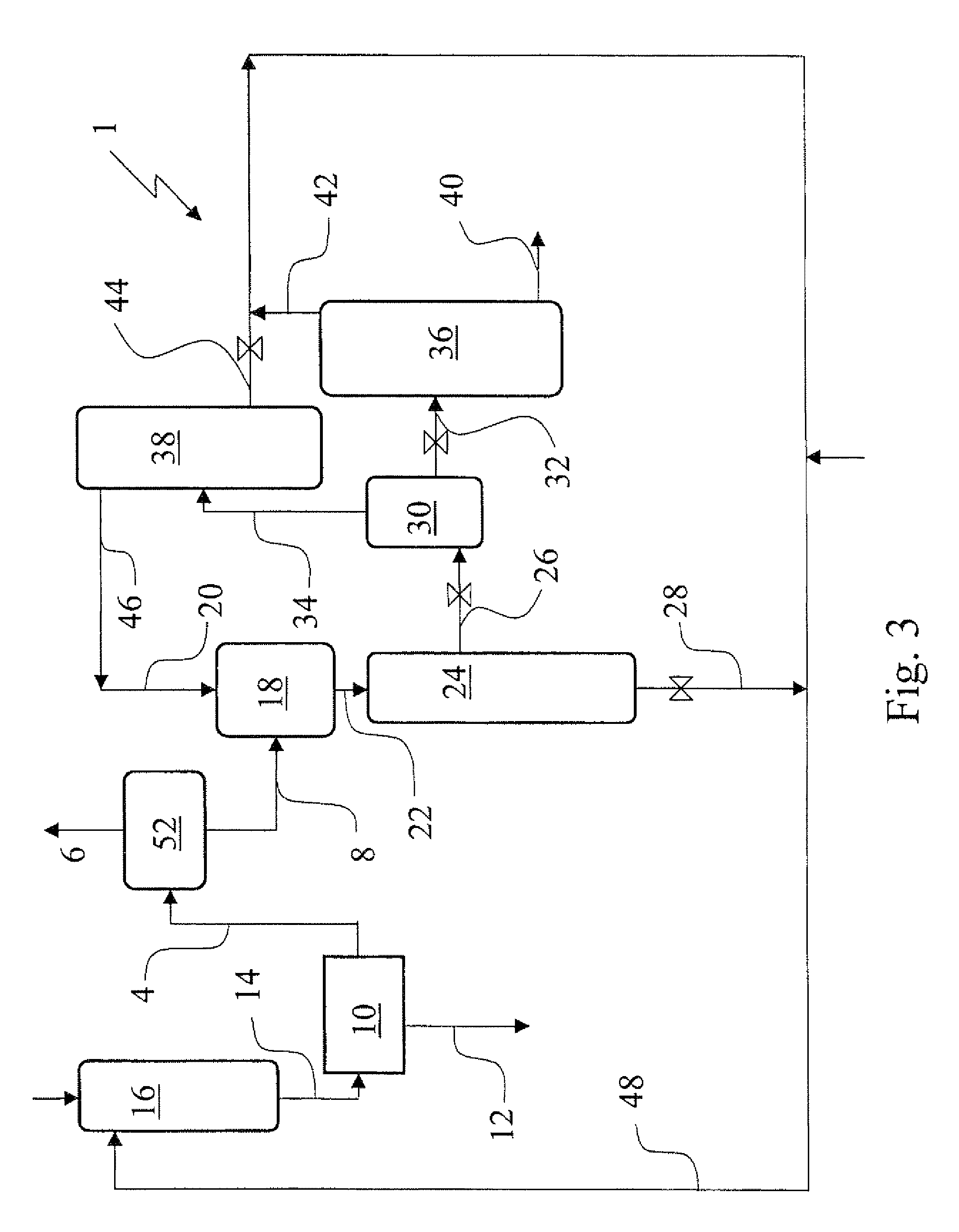Process for isolation of an organic amine
a technology of organic amine and process, which is applied in the field of process for the isolation of organic amine, can solve the problems of inability to polymerize even at all, significant loss of material in the process, and poor properties of polyamides, so as to reduce the formation of side products and increase the organic amine and acid or salt of them
- Summary
- Abstract
- Description
- Claims
- Application Information
AI Technical Summary
Benefits of technology
Problems solved by technology
Method used
Image
Examples
example i
[0063]In a 1.5 autoclave 353 g aqueous 1,4-diaminobutane (67 wt. % in water) and subsequently 712 g aqueous sulfuric acid (37 wt. % in water) were added and mixed to make a solution of 500 g 1,4-diammonium butane sulfate in 565 g water. The solution was heated to 80° C. at normal pressure, than vacuum was applied to distill off the water. A solid dry salt was obtained. Analysis showed that the molar ratio of 1,4-diaminobutane and SO42− to be close to 1. This salt was used for next step. 550 g Liquid pure ammonia was added to 495 g of the 1,4-diammonium butane sulfate salt under continuous stirring. The slurry was stirred for 1 hour. After the stirring was stopped, solid particles settled down and a supernatant liquid was formed. The composition of the supernatant liquid was analyzed as follows. 9.1 g of the liquid was sampled into 881 g of water. The aqueous solution was analyzed from which followed that the liquid sample contained 11.2 wt. % 1,4-diaminobutane, 88.4 wt. % ammonia an...
example ii
[0064]In a 1.5 autoclave 160 g aqueous 1,4-diaminobutane (67 wt. % in water), 322 g aqueous sulfuric acid (37 wt. % in water) and 84 g water were added to make a solution of 226 g 1,4-diammonium butane sulfate and 340 g water. A sample of 45 g was taken. Analysis showed that the concentration of 1,4-diaminobutane, SO42−, and water in the sample was 20, 21 and 59 wt. % respectively. Hence the starting solution contained 41 wt. % of 1,4-diammonium butane sulfate. Liquid pure ammonia was added slowly to the remaining aqueous solution (521 g). Solids were formed directly in the liquid pool, but dissolved by stirring. When 200 ml ammonia (corresponding with about 120 g), was fed the solids formed did not dissolve again. When a total amount of 380 ml ammonia (corresponding with about 230 g) was added the agitator was stopped and after solid particles had settled down a sample of the liquid was taken. Analysis showed that the concentration of 1,4-diaminobutane, SO42−, ammonia and water in ...
example iii
[0067]In a 1.5 autoclave 66 g 1,6-diaminohexane, 149 g aqueous sulfuric acid (37 wt. % in water) and 87 g water were added to make a solution of 121 g of 1,6-diammonium hexane sulfate and 181 g of water. A sample of 31 g was taken. Liquid pure ammonia was added slowly to the remaining aqueous solution (271 g). Solids were formed directly in the liquid pool, but dissolved by stirring. When 190 ml (about 114 g) ammonia was added the formed solids did not dissolve again. When 260 ml (about 156 g) ammonia was added, stirring was stopped, solids were settled down a sample of the resulting liquid phase was taken. The liquid phase was analyzed and showed that the concentration of 1,6-diaminohexane, SO42−, ammonia and water in the sample was 11.8, 4.4, 35.0 and 48.8 wt. % respectively. The molar ratio of 1,6-diaminohexane:SO42− was calculated to be 2.2,
PUM
| Property | Measurement | Unit |
|---|---|---|
| Weight | aaaaa | aaaaa |
| Concentration | aaaaa | aaaaa |
| Solution | aaaaa | aaaaa |
Abstract
Description
Claims
Application Information
 Login to View More
Login to View More - R&D
- Intellectual Property
- Life Sciences
- Materials
- Tech Scout
- Unparalleled Data Quality
- Higher Quality Content
- 60% Fewer Hallucinations
Browse by: Latest US Patents, China's latest patents, Technical Efficacy Thesaurus, Application Domain, Technology Topic, Popular Technical Reports.
© 2025 PatSnap. All rights reserved.Legal|Privacy policy|Modern Slavery Act Transparency Statement|Sitemap|About US| Contact US: help@patsnap.com



